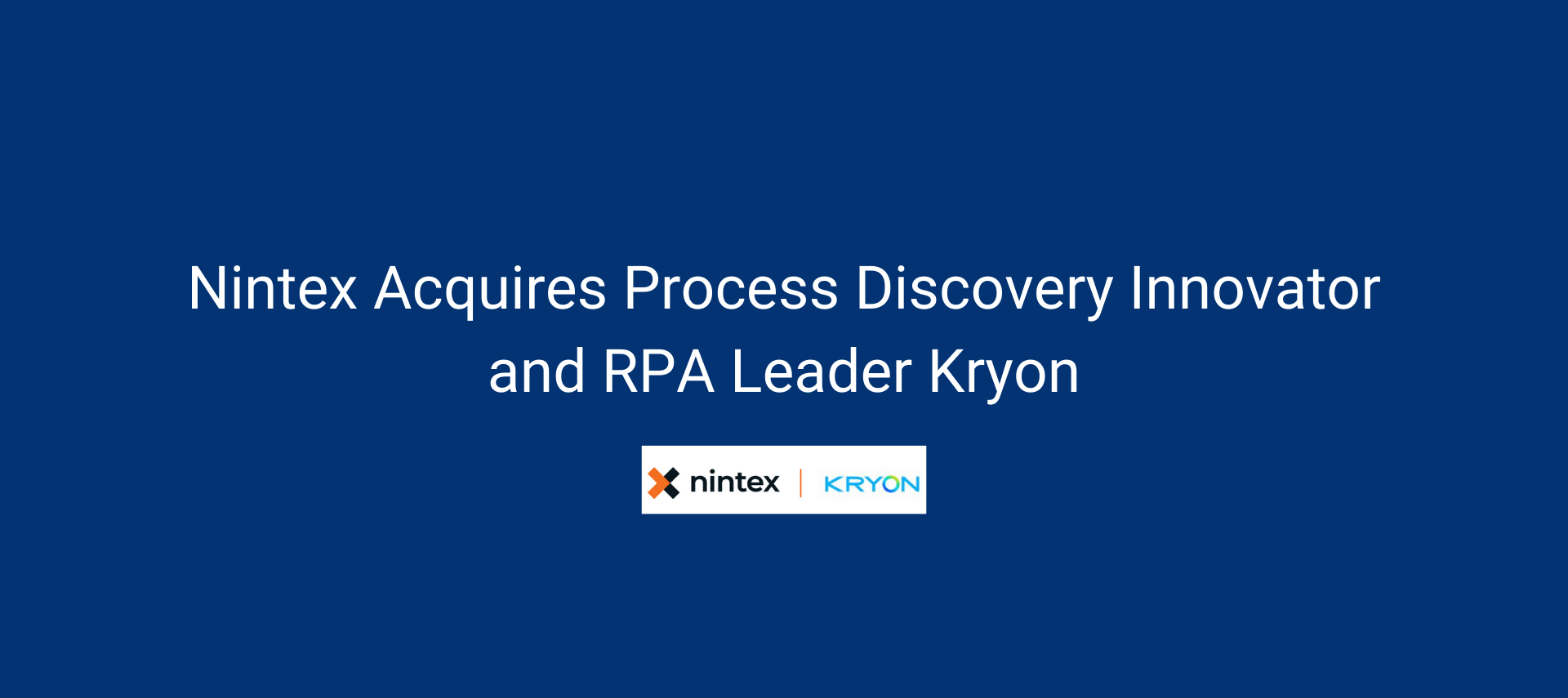
For over a decade, Nintex engineering and product teams have been continually expanding the breadth and depth of the Nintex Process Platform and offerings to facilitate the digital transformation journeys of organizations.
First, by moving Nintex Workflow and Nintex Forms to the cloud, then by adding easy-to-use document automation, visual process mapping tools, and RPA bots. And more recently the advanced capabilities of digital process automation and native eSignatures.

Today, more than 10,000 organizations worldwide leverage the easy-to-use and powerful capabilities of the Nintex Process Platform for their process intelligence, automation, and optimization needs. Hence, rapidly solving enterprise-wide process problems by delivering modern digital automation solutions.
Nintex recently announced that the company has acquired Kryon, a process discovery innovator, and robotic process automation (RPA) leader, to further extend the intelligent process automation (IPA) capabilities of the Nintex Process Platform. Kryon is Nintex’s first acquisition under its new majority investor TPG, and the company’s third acquisition in 16 months.
Nintex acquired K2 Software in October 2020 to deepen its digital process automation (DPA) capabilities and AssureSign in June 2021 to bring native eSignatures to its platform, now marketed as Nintex AssureSign.
Kryon’s AI-based and full-cycle RPA has achieved leader rankings by industry analyst firms including Forrester and IDC, who ranked Kryon a leader alongside the three largest RPA vendors – UiPath, Automation Anywhere, and Blue Prism – within the recently published IDC Market’s cape: Worldwide RPA Software 2021-2022 Vendor Assessment.
Kryon’s RPA offerings enable organizations to put AI-driven attended and unattended RPA bots to work to generate fast ROI, and with Kryon’s process discovery technologies, companies can automatically identify repetitive work processes, visually map the main path and variants of any given process, evaluate the suitability of the process for automation, and instantly generate workflows.
After Kryon’s acquisition, Nintex has strategically moved from DPA (Digital Process Automation) to IPA (Intelligence Process Automation).
IPA is a combination of process automation with Robotic Process Automation (RPA) and Machine Learning (ML). Each of these components has a specific function:
This ultimately forms a dynamic toolkit that can help you digitally transform various business operations with ease. Each piece of technology in IPA is leveraged to achieve complete process automation with high levels of transparency, efficiency, and responsiveness.
IPA tools are used to automate time-consuming, routine business processes, enabling employees to spend more time on cognitive tasks. By freeing-up employee hours, organizations gain efficiency, improve productivity, and reduce costs.
The acquisitions made for the past year and a half are a big leap to extend Nintex’s process automation offerings.
What does this mean for AMO? Being a Nintex partner, this means that we can extend our capabilities with the Nintex platform when building bespoke digital automation solutions for our customers.
Exciting times ahead!
If you would like to know more about our digital solutions. Get in touch!
We gather information about your needs and objectives of your apps. Unsure about the app you need? We will carefully assess your top challenges and provide expert guidance on the perfect solution tailored to your success.
We create wireframes and an interactive prototype to visualise the app flow and make changes as per your feedback.
Estimation of the project deliverables including the resources, time, and costs involved.
Showcasing POC to relevant stakeholders illustrating the functionalities and potential of the app to meet business objectives.